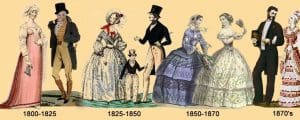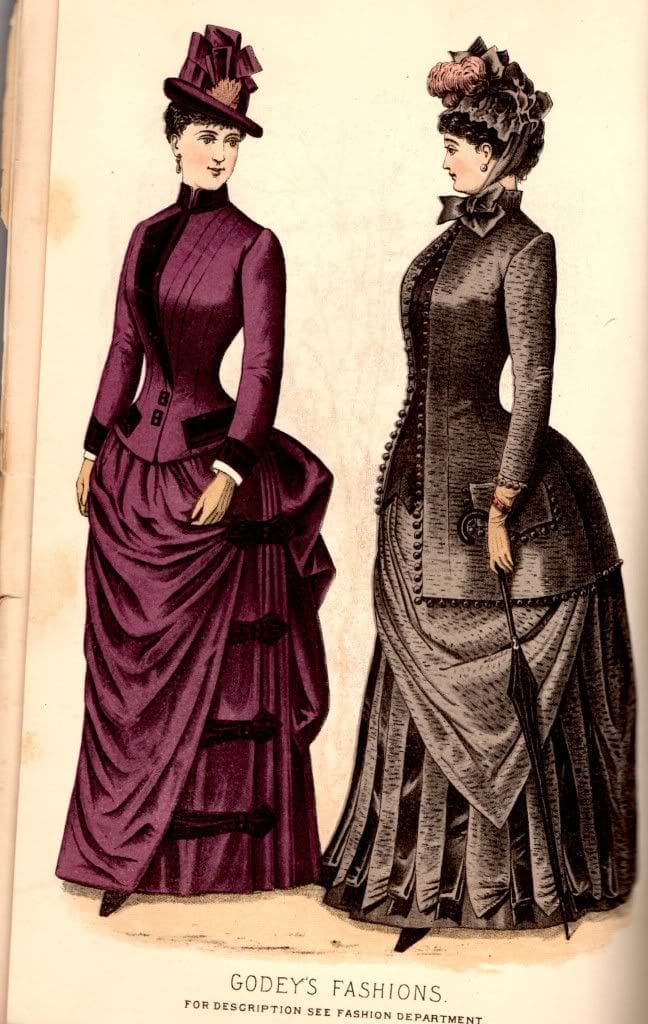
The Victorian time is the period in the British Empire during the rule of Queen Victoria from the last part of the 1830s to the last part of the 1890s in the nineteenth century. This period saw such a large number of changes in design as far as style, design innovation and the modes and techniques for dispersion. Different developments in the British realm greatly affected the changing impression of the customary sex jobs that likewise impacted design.
During the Victorian period ladies by and large worked in family unit private and household circle. The garments that they were viewed as an outflow of ladies’ place in the public eye and was separated in the terms of cast, race and social class. The tip top ladies of the high society ladies who didn’t work regularly wore a tight undergarment over a bodice or a chemise and pair them with a skirt that enhances various weavings, trims and bands over layers of slips.
In the mid 1830s, the beginning of Queen Victoria’s rule the perfect state of the ladies was long thin middle that was underlined by wide hips. To accomplish a thin midriff the girdle was firmly bound and stretched out over the mid-region and down towards the hips. A chemise was usually worn under the undergarment, and slice generally low so as to forestall presentation.

During the 1840s, crumbled sleeves, low neck areas, extended V-molded bodices, and more full skirts described the dress styles of ladies. Toward the beginning of the decade, the sides of bodices halted at the normal waistline, and met at a point in the front. As per the intensely boned bodice and seam lines on the bodice too, the mainstream low and limited abdomen was therefore complemented.
A comparative outline stayed during the 1850s, while certain changed components in the article of clothing. Neck areas of day dresses dropped even lower into a V-shape, making a need spread the bust zone with a chemisette. Interestingly, evening dresses included a Bertha, which totally uncovered the shoulder territory. Bodices started to reach out over the hips, while the sleeves opened further and expanded in totality.
During the early and center 1860s, crinolines started diminishing in size at the top, while holding their adequacy at the bottom. In differentiate, the state of the crinoline got compliment in the front and more voluminous behind. Bodices then again, finished at the characteristic waistline, had wide pagoda sleeves, and included high neck areas and collars for day dresses; low neck areas for night dresses.
The pattern for expansive skirts gradually vanished during the 1870s, as ladies began to lean toward a considerably slimmer outline. Bodices stayed at the characteristic waistline, neck areas differed, while sleeves started under the shoulder line. An overskirt was ordinarily worn over the bodice, and made sure about into a huge bow behind. After some time however, the overskirt abbreviated into a detached Basque, bringing about a stretching of the bodice over the hips.
The mid 1880s was a time of expressive confusion. On one hand, there is the over-ornamented outline with differentiating surface and pointless extras. Then again, the developing fame of fitting offered ascend to another option, serious style. Some attributed the adjustment in outline to the Victorian dress change, which comprised of a couple of developments including the Aesthetic Costume Movement and the Rational Dress Movement in the mid-to-late Victorian Era supporting characteristic outline, lightweight clothing, and rejecting tightlacing. In any case, these developments didn’t increase far reaching support. Still others contended that the developing fame of custom fitted semi-manly suits was essentially a chic style, and showed neither propelled sees nor the requirement for handy clothes. Nonetheless, the enhancement in choices and appropriation of what was considered menswear around then harmonized with developing force and economic wellbeing of ladies towards the late-Victorian time frame.
By 1890, the crinoline and clamor were completely deserted, and skirts flared away normally from the wearer’s small midriff. It developed into a ringer shape, and were made to fit more tight around the hip zone. Neck areas were high, while sleeves of bodices at first crested at the shoulders, however expanded in size during 1894. In spite of the fact that the huge sleeves expected pads to make sure about them set up, it limited towards the decade’s end. Ladies therefore received the style of the custom-made coat, which improved their stance and certainty, while mirroring the guidelines of early female freedom.

Caps (and gloves) were vital to a good appearance for the two people. To go bareheaded was just not appropriate. The formal hat, for instance, was standard proper wear for upper-and working class men. For ladies, the styles of caps changed after some time and were intended to coordinate their outfits.
The ladies’ shoes of the early Victorian time frame were limited and heelless, in dark or white glossy silk. By 1850s and 1860s, they were somewhat more extensive with a low heel and made of calfskin or fabric. Lower leg length bound or fastened boots were additionally mainstream. From the 1870s to the twentieth century, heels became higher and toes more pointed. Low profile siphons were worn for the night.
– by Anushka Dwivedi
picture credits-(google images)
References:
- https://en.wikipedia.org/wiki/Victorian_fashion
Follow Social Media to get Regular updates , Account details :
- Facebook : fashionvaluechain
- Instagram : fashionvaluechain
- Pinterest: fashionvaluechain
- Linkedin : fashionvaluechain
- twitter : fvcmedia

